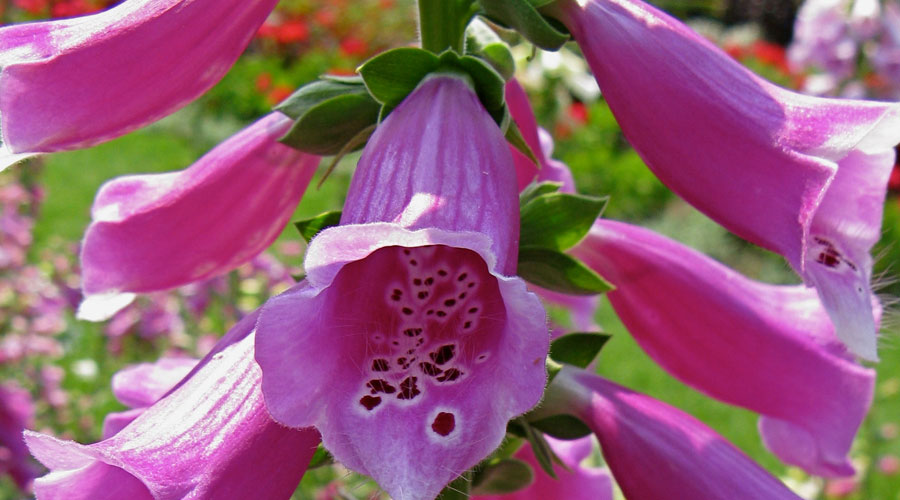Foxglove is an herbaceous biennial or short-lived plant with flowers arranged in a terminal elongated cluster; flowers are typically purple, but some species may have pink, yellow, or white flowers. Due to the presence of the cardiac glycosides, mostly digitoxin, foxglove leaves are poisonous to human and may be fatal if ingested.1

Source of image.
The table below is the classification of foxglove.
| Classification | |
|---|---|
| Kingdom | Plantae – Plants |
| Subkingdom | Tracheobionta – Vascular plants |
| Superdivision | Spermatophyta – Seed plants |
| Division | Magnoliophyta – Flowering plants |
| Class | Magnoliopsida – Dicotyledons |
| Subclass | Asteridae |
| Order | Scrophulariales |
| Family | Scrophulariaceae – Figwort family |
| Genus | Digitalis L. – foxglove |
| Species | Digitalis purpurea L. – purple foxglove |
This film describes the chemical composition and medicinal properties of the common foxglove (Digitalis purpurea), and shows how digoxin is extracted from the leaves of the white Danubian foxglove (Digitalis Lanata).
- Source/uses
Withering an English physician, used digitalis for a wide variety of ailments, including anasarca (generalized edema), epilepsy, hydrothorax (fluid in the pleural cavities), ovarian dropsy, and phthisis pulmonalis (probably tuberculosis). Today, foxglove leaves are extracted to yield digoxin, a cardiac glycoside.4
- Mechanism of Action (if known)
The main mechanism of action of foxglove (digitalis) is on the sodium-potassium ATPase of the myocyte. It reversibly inhibits the ATPase resulting in increased intracellular sodium levels. The build-up of intracellular sodium leads to a shift of sodium extracellularly through another channel in exchange for calcium ions. This influx of intracellular calcium assists with myocyte contractility.3
- Signs and symptoms of toxicity
Foxglove plants contain toxic cardiac glycosides. Ingestion of any parts of the plant can result in severe poisoning. Symptoms include nausea, headache, skin irritation and diarrhea. In severe cases it can lead to visual and perceptual disturbances and heart and kidney problems.2

Source of image.
- Treatments
Treatment involves early recognition and the administration of antibodies specifically against digoxin also known as Fab fragments. Empiric treatment consists of 10 vials of Fab fragments for adults and five vials for children.
Activated charcoal can be considered in the treatment of acute ingestion within two hours. Further treatment is supportive.3
References
- Negroni, M. S., Marengo, A., Caruso, D., Tayar, A., Rubiolo, P., Giavarini, F., Persampieri, S., Sangiovanni, E., Davanzo, F., Carugo, S., Colombo, M. L., & Dell’Agli, M. (2019). A Case Report of Accidental Intoxication following Ingestion of Foxglove Confused with Borage: High Digoxinemia without Major Complications. Case Reports in Cardiology, 2019, 1–6. https://doi.org/10.1155/2019/9707428
- https://www.woodlandtrust.org.uk/blog/2020/07/uk-poisonous-plants/
- Rehman R, Hai O. Digitalis Toxicity. [Updated 2021 Jul 17]. In: StatPearls [Internet]. Treasure Island (FL): StatPearls Publishing; 2021 Jan-. Available from: https://www.ncbi.nlm.nih.gov/books/NBK459165/
- Digitalis: The flower, the drug, the poison. American Association for the Advancement of Science. (n.d.). https://www.aaas.org/digitalis-flower-drug-poison.